Genus Kunzea Rank Species | ||
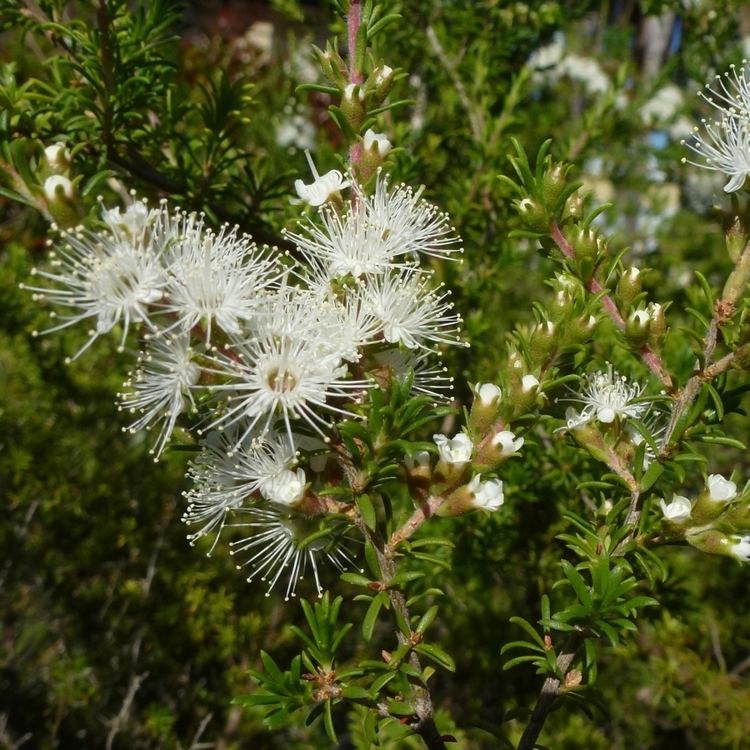 | ||
Similar Kunzea, Kunzea baxteri, Kunzea capitata, Melaleuca nodosa, Allocasuarina littoralis | ||
Kunzea ambigua, commonly known as the white kunzea, poverty bush or tick bush, is a common shrub of the myrtaceae family found mainly on sandstone soils in eastern Australia. Growing up to 5 m (16 ft) high and wide, it bears small white flowers in spring. Used in native gardening, it attracts native insects. It is also used in amenities planting and sand dune stabilization.
Contents
- Taxonomy and naming
- Description
- Distribution and habitat
- Ecology
- Cultivation
- Therapeutic benefits
- References

Taxonomy and naming
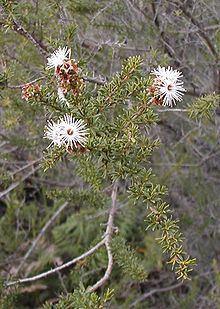
Kunzea ambigua was initially described as Leptospermum ambiguum by James Edward Smith, before English botanist George Claridge Druce gave it its current binomial name in 1917. The generic name honours German naturalist Gustav Kunze, while the specific epithet is derived from the Latin adjective ambiguus 'doubtful' or 'uncertain'. Its common names are white kunzea and tick bush.
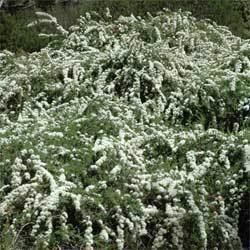
A pale pink-flowered hybrid with Kunzea capitata has been recorded from Stony Range Flora reserve in Dee Why in Sydney's northern beaches region.
Description
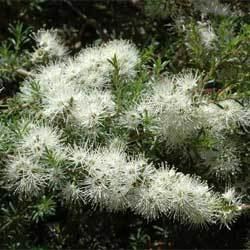
Kunzea ambigua is a small- to medium-sized spreading shrub that may reach 5 m (16 ft) both in height and width, though is usually much smaller (from 1 m (3 ft)). Its bark is fibrous and furrowed, while the narrow lanceolate green leaves are 0.5–1.3 cm in length and 0.2 cm wide, with hairy new growth. Occurring from September to December or January, the white flowers are 1.2 cm in diameter and sweetly fragrant. The stamens are longer than the petals. The flowers are followed by small woody capsules 0.4 cm in diameter.
Distribution and habitat
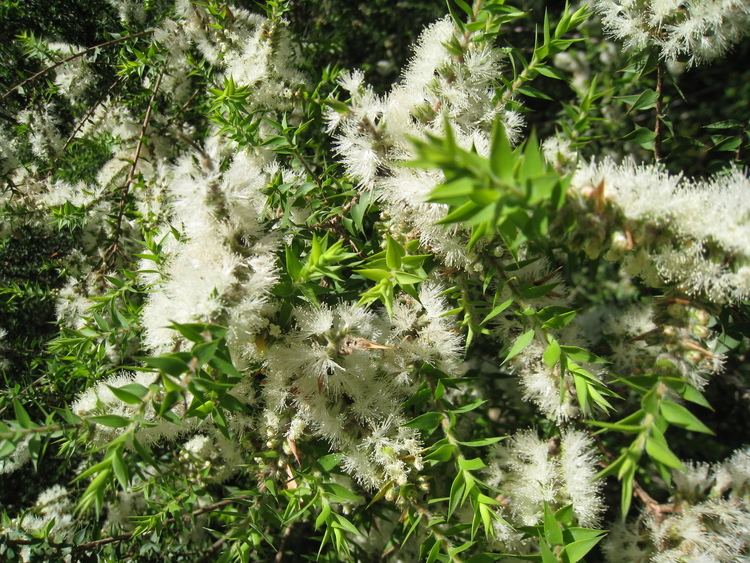
Kunzea ambigua is found from northeastern New South Wales, having been recorded in the Grand High Tops of the Warrumbungle National Park, through Victoria and into Tasmania. It grows on sandy soils in coastal or near-coastal regions. It is a very common dry forest shrub of the Sydney region, and regenerates in disturbed or cleared areas. It is associated with scrub she-oak (Allocasuarina distyla), Melaleuca nodosa, cheese tree (Glochidion ferdinandi) in heath or scrub, and with red bloodwood (Corymbia gummifera), peppermint gum (Eucalyptus piperita), forest red gum (Eucalyptus tereticornis), woolybutt (E. longifolia), thin-leaved stringybark (E. eugenioides), and white feather honeymyrtle (Melaleuca decora) in forested areas. In Wilsons Promontory in Victoria, Kunzea ambigua is the dominant species within scattered areas of treeless heath that occur on granite hills and mountains.
Ecology
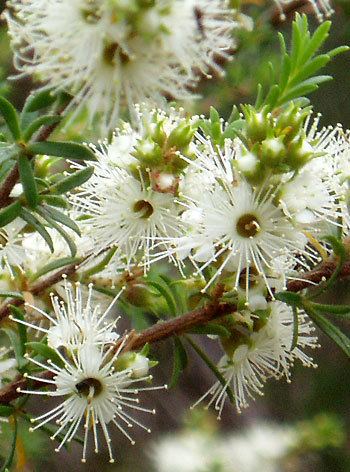
Insects are the main pollinators of Kunzea ambigua; these include various types of beetles including jewel beetles (Buprestidae), scarab beetles (Scarabaeidae), flower beetles (Mordellidae), and checkered beetles (Cleridae) as well as butterflies, flies, bees and wasps. The tick bush is killed by fire and regenerates from seed. Plants can also colonise unburnt sites with ample sunlight.
Cultivation
It was one of the first species of Australian plant introduced into cultivation in England. It is a hardy and adaptable plant that is used in windbreaks and sand dune stabilization plantings, as well as gardens, particularly in Australian gardens using native plants according to principles of natural landscaping. The species attracts Australian native insects, and can provide shelter for small birds and the long-nosed bandicoot (Perameles nasuta).
It can regenerate quickly after disturbance, suggesting it may have weedy potential if planted outside its natural range.
Therapeutic benefits
Kunzea ambigua was traditionally used by Aboriginal communities to relieve irritated skin, muscle tightness and pain. The pure essential oil has been registered with the Australian Therapeutic Goods Administration (TGA) as providing temporary relief of the pain of arthritis.
